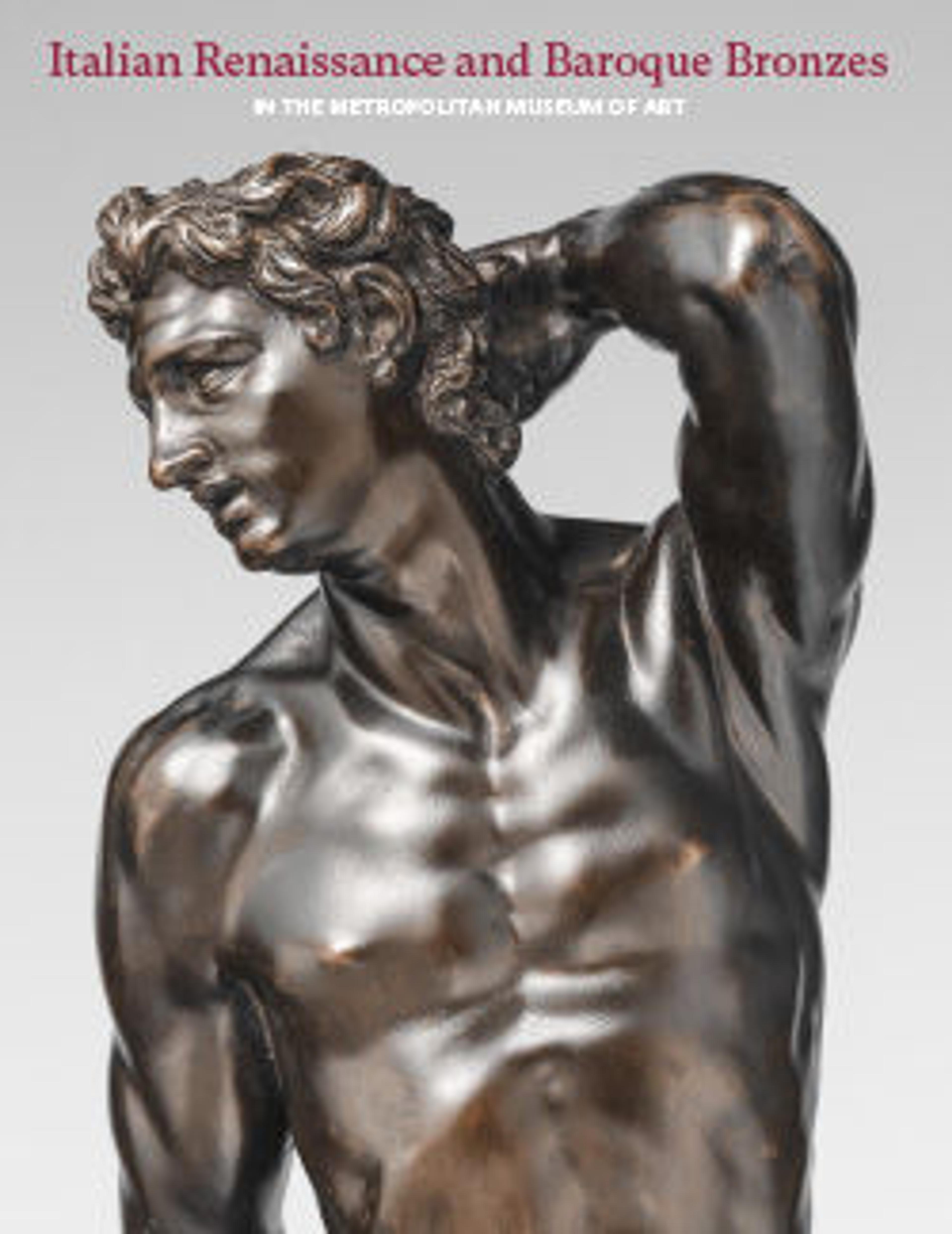Andiron with figure of Jupiter (chenet) (one of a pair)
According to the prominent biographer of artists Giovanni Pietro Bellori (1613–1696), the Baroque sculptor Alessandro Algardi, active in Rome, modeled a set of four firedogs representing the four elements in the guise of mythological figures. Commissioned for Philip IV, king of Spain, the models were created not long before the artist’s death, in 1654. Two of the designs, the figures of Jupiter and Juno as fire and air—a symbolism quite appropriate to their use as firedogs—were executed on a reduced scale for the French court, both in silver and in bronze. Firedogs of this exuberant model, which create a sense of movement and are interesting in the round, also found a market among the French aristocracy and are listed in late seventeenth- and eighteenth-century inventories and sale catalogues. It is generally thought that some of them—varying slightly from Algardi’s originals, which are still extant in Spain—were made in France rather than in Italy. The Museum’s firedogs were cast in multiple pieces, which have been carefully joined together. They have largely kept their original patina.
The chief Roman god, Jupiter, ruler of the sky and master of lightning and thunder, is seated on an eagle, a form he once assumed, atop a globe. Two kneeling Titans shoulder the rocks on which the globe is poised, while a third reclines on the base. Facing her husband, the goddess Juno is perched on her own symbolic animal, the peacock. Representing beauty, this bird stands on a globe carried by wind gods, their cheeks full of air.
Although the casts have long been considered seventeenth century, the raised heads of the deities and the sweet, smiling countenance of Juno, as well as her hair ornament and details of her sandals, suggest an eighteenth century date for the Museum’s majestic firedogs instead.
The chief Roman god, Jupiter, ruler of the sky and master of lightning and thunder, is seated on an eagle, a form he once assumed, atop a globe. Two kneeling Titans shoulder the rocks on which the globe is poised, while a third reclines on the base. Facing her husband, the goddess Juno is perched on her own symbolic animal, the peacock. Representing beauty, this bird stands on a globe carried by wind gods, their cheeks full of air.
Although the casts have long been considered seventeenth century, the raised heads of the deities and the sweet, smiling countenance of Juno, as well as her hair ornament and details of her sandals, suggest an eighteenth century date for the Museum’s majestic firedogs instead.
Artwork Details
- Title:Andiron with figure of Jupiter (chenet) (one of a pair)
- Artist:After models by Alessandro Algardi (Italian, Bologna 1598–1654 Rome)
- Date:late 17th century
- Culture:probably cast in France
- Medium:Bronze
- Dimensions:Height: 45 1/2 in. (115.6 cm)
- Classification:Sculpture-Bronze
- Credit Line:Gift of Mr. and Mrs. Charles Wrightsman, 1973
- Object Number:1973.315.16
- Curatorial Department: European Sculpture and Decorative Arts
More Artwork
Research Resources
The Met provides unparalleled resources for research and welcomes an international community of students and scholars. The Met's Open Access API is where creators and researchers can connect to the The Met collection. Open Access data and public domain images are available for unrestricted commercial and noncommercial use without permission or fee.
To request images under copyright and other restrictions, please use this Image Request form.
Feedback
We continue to research and examine historical and cultural context for objects in The Met collection. If you have comments or questions about this object record, please contact us using the form below. The Museum looks forward to receiving your comments.
